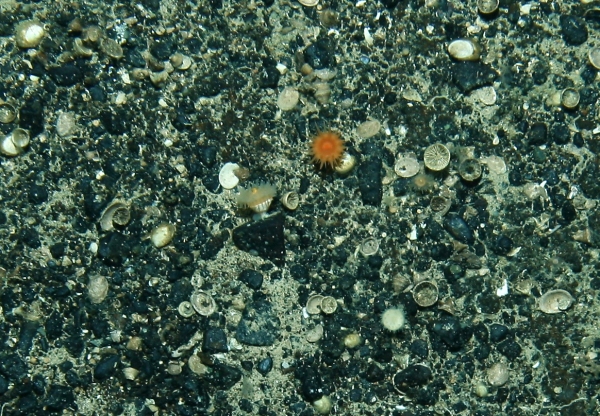This week's Critter of the Week (number 142) introduces the delicate cup coral Caryophyllia.
Cup corals is the common name for solitary hard corals. Most of the corals we associate with hard corals are colonial, sometimes reaching massive sizes (the Great Barrier Reef is nearly entirely built of these colonial structures). We have shown examples of our New Zealand deep-sea colonial corals in our Coral Garden series (e.g. CotW 37 and 74).
If you extract a single coral polyp from these colonial corals, and encased it in its very own skeleton, you have a solitary coral. Some may be large and look more like a set of dentures (see CotW 6, Flabellum), others look more horn-shaped or have short, flat disks, reflecting a large diversity of these organisms across a wide range of coral families (see an example of shapes and sizes in this recently published illustrated key here).
In New Zealand, the majority of the hard corals listed in Gordon’s (2009) Inventory of Biodiversity are solitary and most of these occur in the deep sea. But have a look at some beautiful examples of tropical shallow-water cup corals here.
In common coral-fashion, we usually see cup corals attached to hard, rocky substrates, vantage points to filter feed from, and limited amounts of fine sediments to clog their filter-feeding apparatus. There are exceptions, however, Flabellum (CotW 6) being one of them, where the cup manages to maintain a position upright and extending beyond the surface of the surrounding soft sediments. And we think that this week’s Caryophyllia sp. may be doing the same since we collected it from a habitat which appeared to be exclusively muddy and perhaps the seafloor image shows one of our critters in action.
These cup corals, seen on Scott Seamount north of the Ross Sea reflect a more typical habitat for cup corals. The calcified stalk of the cup is attached to small rocks in this case. Note the dead cup coral skeletons around the two central live specimens that show their beautiful tentacles. [DTIS NIWA/ IPY-CAML TAN0802]


